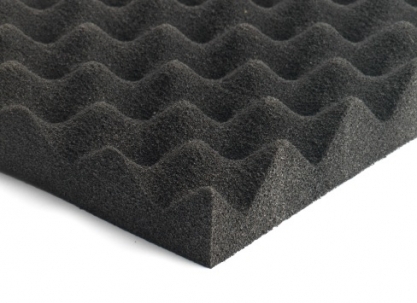In today’s world, where safety is a top priority, understanding the role of fire suppression is crucial. Class 0 Foam is one such innovative solution that has gained prominence in the field of fire safety. In this comprehensive guide, we’ll explore the intricacies of Class 0 Foam, its applications, benefits, and much more.
Class 0 Foam: A Brief Overview
Class 0 Foam, often referred to as “Class Zero Foam,” is a specialized type of fire suppression foam. It is classified as a high-performance fire-extinguishing agent designed to combat various types of fires effectively. Unlike conventional fire-fighting methods, Class 0 Foam offers a distinct advantage due to its unique properties.
Application Areas
This remarkable foam is not limited to a specific industry or setting. Its versatility makes it suitable for a wide range of applications. Whether you’re protecting an industrial facility, a residential building, or even transportation systems, Class 0 Foam can play a pivotal role in safeguarding lives and property.
The Science Behind Class 0 Foam
Understanding how Class 0 Foam suppresses fires is essential to appreciate its effectiveness. The foam operates on the principle of creating a thick, heat-resistant blanket that suffocates the fire and prevents oxygen from fueling it further. Its chemical composition is carefully engineered to maximize fire suppression capabilities.
Benefits of Class 0 Foam
Enhanced Fire Suppression
Class 0 Foam boasts remarkable fire-extinguishing abilities. It rapidly cools down the flames and minimizes heat transfer, ultimately extinguishing the fire. This efficiency can be a game-changer in emergency situations, reducing the risk of extensive property damage.
Reduced Property Damage
Compared to traditional firefighting methods, Class 0 Foam leaves minimal residue and water damage. This means that, in addition to saving lives, it also helps preserve valuable assets and belongings.
Environmental Friendliness
Class 0 Foam is designed with the environment in mind. It contains eco-friendly components, minimizing its impact on the ecosystem. This makes it a responsible choice for those who prioritize both safety and environmental sustainability.
Where Class 0 Foam is Used
Industrial Settings
In industrial environments, where the risk of fires is often heightened, Class 0 Foam plays a crucial role in ensuring worker safety and protecting valuable equipment.
Residential Buildings
Residential buildings, too, benefit from the installation of Class 0 Foam systems. In the event of a fire, it can make the difference between a minor incident and a catastrophic one.
Transportation
Whether in aircraft, trains, or ships, Class 0 Foam is becoming an essential component of fire suppression systems, guaranteeing the safety of passengers and crew members.
Choosing the Right Class 0 Foam
When selecting Class 0 Foam for your specific needs, several factors come into play. Safety regulations, compatibility with existing systems, and the type of fire hazards you’re likely to encounter are all critical considerations. Consulting with experts in fire safety can help you make an informed decision.
The Future of Class 0 Foam
As technology advances, so does fire safety. Class 0 Foam continues to evolve, with ongoing research and development efforts aimed at enhancing its effectiveness. New technologies and innovations are continually being explored to further improve fire suppression methods.
How to Properly Store and Maintain Class 0 Foam
Storing and maintaining Class 0 Foam is essential to ensure it functions correctly when needed. Follow stringent storage guidelines and implement regular maintenance routines to guarantee its reliability.
Class 0 Foam vs. Traditional Firefighting Methods
Comparing Class 0 Foam to traditional firefighting methods, such as water or chemical agents, reveals its clear advantages. Its rapid and efficient fire suppression capabilities, combined with reduced collateral damage, make it a superior choice in many scenarios.
Real-Life Examples
Success Stories
Numerous success stories highlight the effectiveness of Class 0 Foam in preventing catastrophic fires. These stories underscore its importance in fire safety.
Fire Incidents Prevented
Instances where Class 0 Foam systems prevented fire incidents from escalating into disasters further emphasize its value as a fire suppression solution.
Case Study: Class 0 Foam in Action
To illustrate its effectiveness in a real-world context, we present a detailed case study showcasing Class 0 Foam’s performance during a specific fire incident. This case study provides valuable insights into its capabilities.
Common Misconceptions About Class 0 Foam
Addressing myths and misconceptions is essential to provide accurate information about Class 0 Foam. Separating fact from fiction ensures that individuals and organizations make informed decisions regarding fire safety.
Conclusion
In conclusion, Class 0 Foam represents a significant advancement in fire safety technology. Its ability to swiftly suppress fires while minimizing damage and its eco-friendly design make it an essential tool for ensuring the safety of people and property. By understanding the science behind Class 0 Foam and its diverse applications, you can make informed decisions about implementing this remarkable fire suppression solution. Embrace the future of fire safety with Class 0 Foam.
Frequently Asked Questions (FAQs)
Is Class 0 Foam safe for the environment?
Yes, Class 0 Foam is designed with eco-friendly components and minimal environmental impact in mind.
Can Class 0 Foam be retrofitted into existing fire suppression systems?
In many cases, it can be integrated into existing systems, but a professional assessment is recommended for compatibility.
How does Class 0 Foam compare to traditional fire extinguishers?
Class 0 Foam is often more effective, leaves less residue, and is considered superior in many fire suppression scenarios.
What industries benefit the most from Class 0 Foam?
Industries with high fire risks, such as chemical manufacturing and oil refineries, benefit significantly from Class 0 Foam.
Is Class 0 Foam cost-effective in the long run?
While the initial investment may be higher, the reduced property damage and enhanced safety make it cost-effective in the long term.

